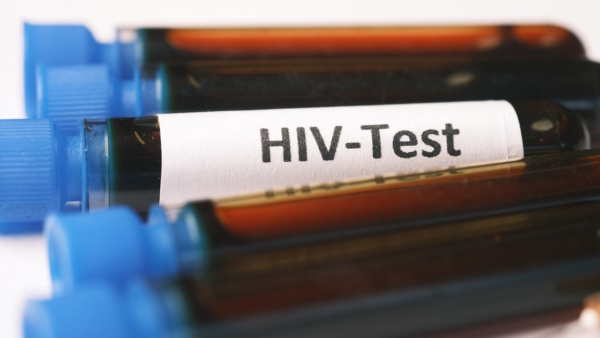Overview
Ireland does not have an HIV-specific law, but general criminal laws have been used to respond to cases involving a perceived HIV transmission risk.
All prosecutions have occurred under the general assault provisions found in the Non Fatal Offences Against the Person Act 1997 (sections 2-4). The offence of ‘endangerment’ in the same act (section 13) might also apply in cases involving a ‘substantial risk of death or serious harm’.
The first reported cases related to perceived ‘exposure’ through non-sexual means. In the first case, a man living with HIV pled guilty in 2008 to assault causing harm after biting a police officer during a domestic disturbance. The bite allegedly drew blood and the officer began a course of anti-retroviral treatment while awaiting test results, which came out negative. A second similar case was reported in 2014, but the outcome is not known.
In a 2017 case, a defendant admitted to assault at his home after he spat bloody saliva into a policeman’s mouth, shouting “I have AIDS”. The incident occurred after he had been stabbed in the leg following a domestic incident. The accused also admitted to violent disorder after doing the same at a police station. It is understood he was convicted under section 2 of the Non Fatal Offences Against the Person Act 1997 and section 15 of the Criminal Justice (Public Order) Act 1994, despite blood tests showing he did not have HIV.
In 2018, the first known Irish case involving alleged sexual transmission of HIV resulted in the conviction of an African national for causing serious harm after allegedly transmitting HIV to two former partners some time during 2009 or 2010. It was alleged that despite being aware of his HIV-positive status, the man neither used condoms nor took anti-viral medication. The women both contracted HIV, but while they were pregnant, their children did not. The accused was charged with two counts under section 4 of the Non Fatal Offences Against the Person Act 1997, and was sentenced to 10 years in prison on each count.
In June 2021, an appeal was made to the Court of Appeal with lawyers arguing that the defendant did not receive a fair trial due to the judge allowing medical evidence as to the likelihood of transmission to be given by a doctor who had no expertise on HIV (his evidence was later contradicted by two HIV experts), the lack of phylogenetic analysis, and failures by the judge to give proper warnings to the jury about the veracity of the evidence presented. In essence, the appeal was based on the argument that the prosecution evidence was inadequate for proving beyond a reasonable doubt that the defendant’s conduct caused transmission. In June 2022, the appeal was rejected and the defendant’s conviction was upheld. In October 2022, a further appeal arguing that the sentence was disproportionate was also rejected. In May 2023, an appeal to the Supreme Court was granted by a three-judge panel which determined that the case raised legal points of public importance concerning the necessary evidentiary standard to prove such criminal charges.
In December 2023, the Supreme Court issued its judgement, and the conviction was quashed. The Court reasoned that the case was settled on both the complainants’ testimony and on scientific evidence, both of which needed to be addressed with greater care by the trial court. There were significant issues with the credibility of the complainants’ testimony – which was the key basis of the case – and the trial court admitted that both had told lies and withheld information about their sexual histories. The scientific evidence also had significant flaws, as evidence given by the primary witness was contradicted by other witnesses with greater expertise, who argued that the evidence available, while inadequate to determine the route of transmission, pointed away from the appellant. Furthermore, the Supreme Court noted failings in the trial judge’s directions to the jury, which may have allowed it to place undue emphasis on flawed evidence. The Court noted that the importance and novelty of this case in Ireland meant that the judge should have provided greater guidance to the jury. As such, the conviction could not stand.
While this case was settled on the specifics of the evidence provided, the Supreme Court’s judgement contains reflections on the use of phylogenetic analysis – which can identify links between the viruses carried by different people but cannot alone definitively prove routes of transmission – that may prove influential in future cases. Phylogenetic analysis was not performed in this case, but the expert evidence given and accepted by the Supreme Court noted that it could not prove that a particular person was the definitely the source of an HIV transmission, though it could provide a finding consistent with that suggestion, or could exclude a person as a potential transmission source). The Court held that a full phylogenetic analysis is not required or essential in all cases in Ireland, and individual testimony and factual evidence continues to have precedence.
In another case reported in 2017, the High Court refused to accept a request by the Child and Family Agency to disclose the HIV status of a teenager in their care to another girl who they alleged he was having unprotected sex with. The teenager denied the claims, and the Court determined that there was insufficient evidence to warrant a breach of his confidentiality to inform the girl, who was unaware of the proceedings. No criminal case was initiated.
In at least one other case, alleged HIV non-disclosure has been grounds for the granting of a protection order under the Domestic Violence Act. In a case reported in March 2024, a family court judge issued an order after a woman alleged her husband had been living with HIV and had sex with her without disclosing his status. The order was issued in absence of the husband, and the judge encouraged the woman to file a report with the police to pursue criminal charges.
In a tragic case in 2009 (not included in the case count above), the Office of the Director of Public Prosecutions accepted a defence that exposure to spit from an HIV-positive person constituted provocation to violence, with a subsequent downgrading of charges. The case related to the killing of a 50-year-old man who the assailant presumed was HIV-positive. The act occurred after an argument escalated and the deceased spat at the accused before crossing the road and moving away. The man died after he was pursued, and the assailant punched him to the ground and stomped on his head using his full body weight. HIV cannot be transmitted by spit.
Laws
Non Fatal Offences Against the Person Act
Section 2. Assault
(1) A person shall be guilty of the offence of assault who, without lawful excuse, intentionally or recklessly—
(a) directly or indirectly applies force to or causes an impact on the body of another, or
(b) causes another to believe on reasonable grounds that he or she is likely immediately to be subjected to any such force or impact, without the consent of the other.
(…)
(4) A person guilty of an offence under this section shall be liable on summary conviction to a fine not exceeding £1,500 or to imprisonment for a term not exceeding 6 months or to both.
Section 3. Assault causing harm
(1) A person who assaults another causing him or her harm shall be guilty of an offence.
(2) A person guilty of an offence under this section shall be liable—
(a) on summary conviction, to imprisonment for a term not exceeding 12 months or to a fine not exceeding £1,500 or to both, or
(b) on conviction on indictment to a fine or to imprisonment for a term not exceeding 5 years or to both.
Section 4. Assault causing serious harm
(1) A person who intentionally or recklessly causes serious harm to another shall be guilty of an offence.
(2) A person guilty of an offence under this section shall be liable on conviction on indictment to a fine or to imprisonment for life or to both.
[Section 1. Interpretation – “serious harm” means injury which creates a substantial risk of death or which causes serious disfigurement or substantial loss or impairment of the mobility of the body as a whole or of the function of any particular bodily member or organ.]
(…)
Section 13. Endangerment
(1) A person shall be guilty of an offence who intentionally or recklessly engages in conduct which creates a substantial risk of death or serious harm to another.
(2) A person guilty of an offence under this section shall be liable—
(a) on summary conviction to a fine not exceeding £1,500 or to imprisonment for a term not exceeding 12 months or to both, or
(b) on conviction on indictment, to a fine or to imprisonment for a term not exceeding 7 years or to both.
Criminal Justice (Public Order) Act
Section 15. Violent disorder
(1) Where—
(a) three or more persons who are present together at any place (whether that place is a public place or a private place or both) use or threaten to use unlawful violence, and
(b) the conduct of those persons, taken together, is such as would cause a person of reasonable firmness present at that place to fear for his or another person’s safety,
then, each of the persons using or threatening to use unlawful violence shall be guilty of the offence of violent disorder.
(2) For the purposes of this section—
(a) it shall be immaterial whether or not the three or more persons use or threaten to use unlawful violence simultaneously;
(b) no person of reasonable firmness need actually be, or be likely to be, present at that place.
(3) A person shall not be convicted of the offence of violent disorder unless the person intends to use or threaten to use violence or is aware that his conduct may be violent or threaten violence.
(4) A person guilty of an offence of violent disorder shall be liable on conviction on indictment to a fine or to imprisonment for a term not exceeding 10 years or to both.
(5) A reference, however expressed, in any enactment passed before the commencement of this Act—
(a) to the common law offence of riot, or
(b) to the common law offence of riot and to tumult,
shall be construed as a reference to the offence of violent disorder.
(6) The common law offence of rout and the common law offence of unlawful assembly are hereby abolished.
Acknowledgements
Our thanks to Australian law firm Hall & Wilcox for their research assistance to confirm current relevant legislation.
HIV Justice Network's Positive Destinations
Visit the Ireland page on Positive Destinations for information on regulations that restrict entry, stay, and residency based on HIV-positive status, as well as access to HIV treatment for non-nationals.





